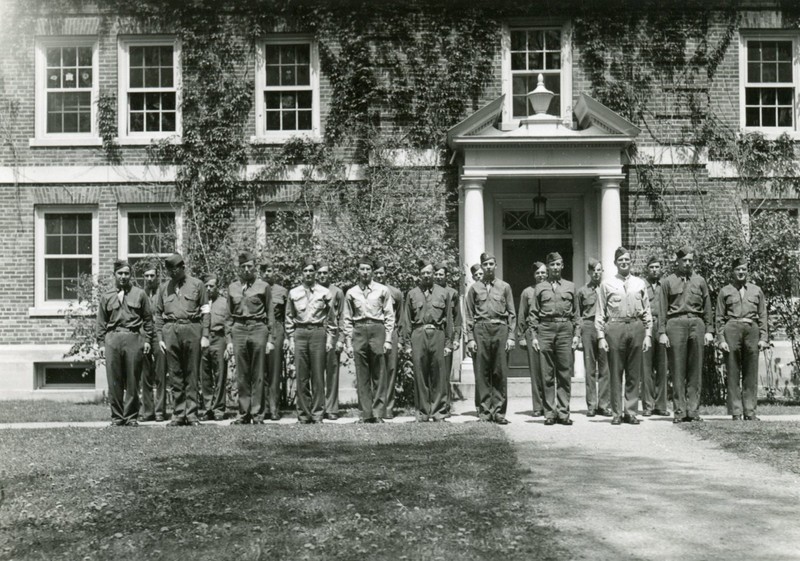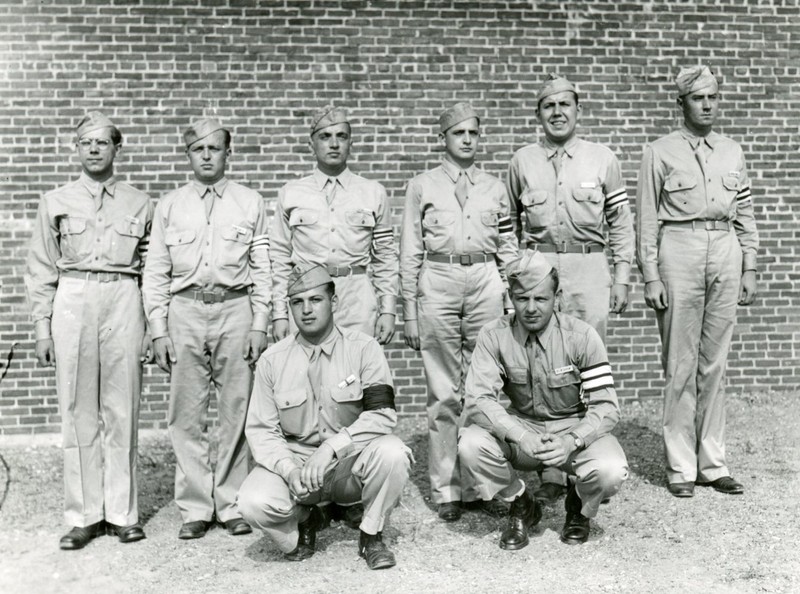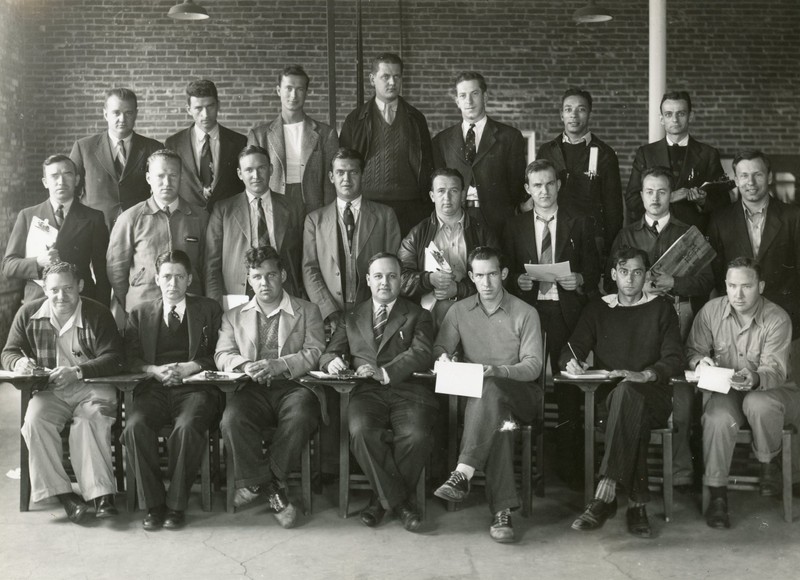Students in Service: The Class of 1944
Introduction
Text-to-speech Audio
Images
WWII servicemen pictured in front of WWII. Unknown date.

Undated image of unidentified UMaine servicemen

World War II, University of Maine, men in war training class, Professor Benjamin Kent in center of front row. Professor Kent was the Institutional Representative of the Federal Security Agency, U.S. Office of Education, Engineering, Science and Management War Training.

Backstory and Context
Text-to-speech Audio
From the earliest days on campus, students have been involved in the military, including the Civil War, Spanish American War, and both World Wars. Stephen L. Jacobs was a student at the University of Maine and a member of the historic Class of 1944, for which this building is named. In 1943, student enrollment dropped by roughly 40% as most male students enlisted. Jacobs, who had served in the ROTC during the build up to World War II, put his education on pause to answer the call of duty, leaving a new wife, Isabell Ansell, behind. He served in the Pacific theater from June 7th, 1943 to March 30th, 1946. He was awarded a Purple Heart for being wounded by tank fire, and a Bronze Star for heroic service.
After the war he returned to UMaine to finish his education, taking advantage of GI Bill assistance towards tuition and living expenses. Efforts like FERA and larger Works Progress Administration initiatives mentioned in the previous tour stop paved the way for later government assistance programs like the GI Bill. By 1956, nearly 8 million veterans used the benefits to attend colleges or universities, and more than 5 million for other vocational training programs.
He graduated in 1947 with a bachelor’s degree in forestry, and pioneered Maine’s first high school course in forestry at Gould Academy in Bethel, Maine. Jacobs earned a Masters degree in education from UMaine in 1963 and went on to teach physics and chemistry at Dexter Regional High School for 17 years.
As a tribute to the fellow UMaine students he served with, in the last decade of his life Jacobs created a history of the Class of 1944. Despite the likely difficulty in recalling traumatic memories of the war, Jacobs went to great lengths to recognize his classmates’ heroism. He collected stories and service records about his fellow students in service, both those who returned, and those fallen who never had the chance to come home. In total, 69 UMaine alumni lost their lives in the war. Their stories will live on in perpetuity in Fogler Library’s Special Collections thanks to Jacobs’ dedication.
Sources
University of Maine. Class Of 1944 Advanced Infantry ROTC Records, UA RG 0010.005, Raymond H. Fogler Library Special Collections Department, University of Maine, Orono, Maine.
University of Maine Photo Archives
University of Maine Photo Archives
University of Maine Photo Archives
